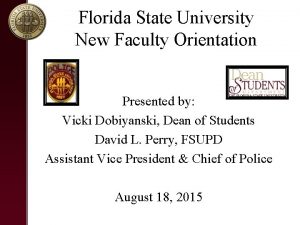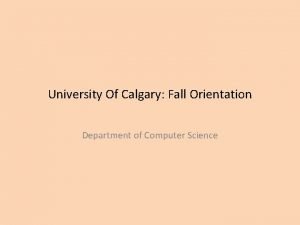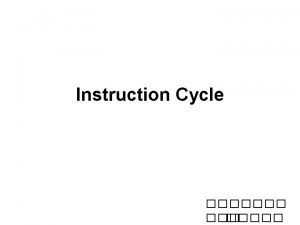New Faculty Orientation Tips for Fall 2020 Instruction






- Slides: 6

New Faculty Orientation: Tips for Fall 2020 Instruction Renata Engel, Vice Provost for Online Education Yvonne Gaudelius, Associate Vice President and Senior Associate Dean for Undergraduate Education August 20, 2020

Modes of instruction - the why and how? Drivers for developing remote instruction models • Social distancing protocols reduced the capacity of classroom space by as much as 70% • Some instructors’ personal situations required them to teach at a distance • Some students who could not be on campus would need to access courses remotely Drivers for developing on campus instruction models • Studio courses, performance-based and laboratory courses require specialized facilities • Accreditation for some programs requires in-person teaching (e. g. Allied Health) • Instructors who wanted to teach and were comfortable teaching in person Penn State’s instructional designers were charged to develop and support a set of instructional modes • 4 flexible models with some variations were selected to maximize flexibility for instructors • Companion materials and resources were developed for each and can be found at Keep. Teaching. psu. edu In-Person Mixed-Mode Remote Synchronous Remote Asynchronous

A pivot to remote may be needed before Nov 20. Planning for it without being consumed by it. Resources are plentiful keepteaching. psu. edu includes guides, recorded webinars, and a links to support Remote Synchronous Instruction and a Transition to Remote Delivery. Some practical tips for planning from the start: • Create assignments and examinations that can be delivered remotely. • Familiarize yourself and your students with communication tools (Zoom) and collaboration tools (Canvas) for remote learners while still in-person. • Tap into Tech Tutors and Tech TAs and instructional design consultants in your unit or university expertise through the liaisons at the Schreyer Institute for Teaching Excellence.

Supporting students in quarantine and isolation Isolation is for students who test positive or are presumed positive for COVID-19 Quarantine is for students who have had close contact with a confirmed case Find details of duration of isolation and quarantine at the virusinfo website. Tips when students miss class 1. Remember that absences happen with and without COVID-19. 2. Develop your approach for absences and communicate it to students on the first day and on your syllabus • Set expectations for participation and anticipate that students will be absent on occasion or for extended time if they are in isolation or quarantine due to COVID-19. • Avoid rewarding attendance or penalizing absences to ensure students with symptoms stay away. • Offering participation points rather than attendance points works for all students. • Record sessions (Zoom technology) for students who may be experiencing illness. • Anticipate that remote students may be impacted also (i. e. , too ill to attend remote synchronous classes or meet remote asynchronous assignment deadlines or exam dates). 3. Familiarize yourself with University policies and suggested syllabus statements. • Class attendance Faculty Senate Policy 42 -27, Class Attendance • Deferred Grades Faculty Senate Policy 48 -40, Deferred Grades • Syllabus Statements https: //senate. psu. edu/syllabus-language-for-required-and-covid-19 -related-topics/

Instructors set classroom tone with empathy, care, and connection with students Set the tone at the start using a reference that also offers some tips on taking care of yourself. Acknowledge the stress that exists and that many other current realities add to the already stressful situations that exist when in college. Keep attuned to the class throughout the semester. Recognize when individual students may need additional support and keep the “red folder” on your desktop. Facilitating Learning When Students are Under Stress, developed by Drs. M. Strickland A. Tatusko of Penn State

A Resource Short List Quick links to website resources Keep Teaching site: https: //keepteaching. psu. edu/ includes a wide range of resources, FAQs, webinar information including links to past webinars. Instructor Guide to Fall provides information for planning for the semester, first day of the semester, transitioning to remote and last weeks of the semester. Suggested syllabus language from the Faculty Senate. Quick links to units with responsibility for teaching and learning support Schreyer Institute for Teaching Excellence advances and inspires excellence in Penn State’s teaching and learning community. Teaching and Learning with Technology collaborates with faculty to enhance teaching and learning through cutting-edge technology. College and Campus Contacts for Instructional Support provide discipline-specific and local support for instructors. World Campus Faculty Development supports faculty throughout their teaching careers to improve and enhance their online teaching.











